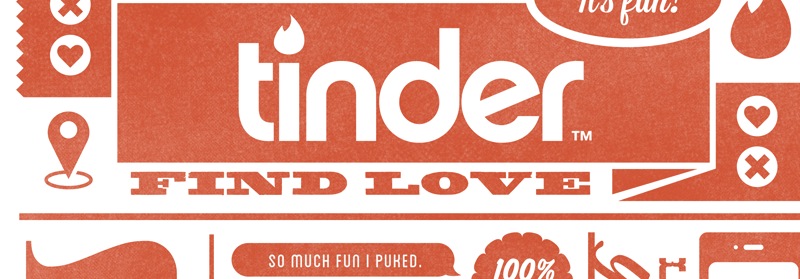Does Tinder Help or Hinder the Dating World?
Katie Smith, Staff Writer
Next time you’re looking for a special someone, you may not have to wade through dozens of profiles and questions forms to find your partner. Tinder, a free app available for both iPhones and Android phones, allows users to browse through photos of other singles located within 10 to 100 miles. The app accesses your Facebook page and harvests photos along with information posted on your “About Me” page to build a Tinder profile. Then, users in your geographic area can view your photo and swipe right for “hot” or left for “not”. If both parties rate each other as “hot,” then they are matched and can send each other messages.
Before writing this article, I decided to use the app and gain a better understanding of how it works in a real world setting. After my Tinder profile was created, I edited my content by deleting some duplicate photos, beefed up my profile blurb and got down to work. My sample population is admittedly skewed, since I live in the biggest college town in the world; more universities typically mean a rise in the Millennial population, who comprise nearly 80% of Tinder’s user population.
Tinder has an atmosphere that screams simple fun with no strings attached. Users simply rate the photo they’re given, which is much less complicated than the “traditional” way to meet people at university. The site also removes the sting of rejection from the dating scene. Users only receive messages when they are matched with another single.
Despite the advantages the site offers, one question remains: Does Tinder perpetuate the hook-up culture? Based on my conversations with app users, a great deal depends on expectations. Essentially, individuals perpetuate their own hook-up culture if that’s what they’re looking for.
“Honestly, it’s just fun to see who you match up with,” said a fourth-year student at Emerson University who preferred to remain anonymous (and who was probably confused as to why I was asking questions rather than sending winky faces). “I have zero expectations when using it.”
Essentially, users decide whether or not they’re interested very quickly, without any verbal conversation whatsoever, and it is up to them to decide whether they wish to meet face-to-face. Even then, a hook-up is not guaranteed.
During a Facebook chat, a liberal arts student named Taylor said she found a fella who was “freakishly similar to me. We had almost everything in common and agreed on all philosophical opinions. We even had friends in common.” However, their face-to-face meeting was somewhat different than expected. “[When] we finally hung out, there was no excitement. It felt like I was hanging out with an old friend from elementary school. We didn’t have the same connection in real life that we had over text,” she said.
The moral of the story is that Tinder does provide new opportunities to meet singles in your area. It doesn’t necessarily guarantee chemistry with everyone you meet, but half the fun is the mystery of the process. When your expectations are realistic, it provides a great opportunity for fun.
Katie Smith is a third-year student studying journalism and Spanish at Boston University in Boston, Massachusetts. She is the Campus section editor for BU’s lifestyle magazine The Buzz and enjoys getting an occasional full night’s sleep.































Share the post "Does Tinder Help or Hinder the Dating World?"